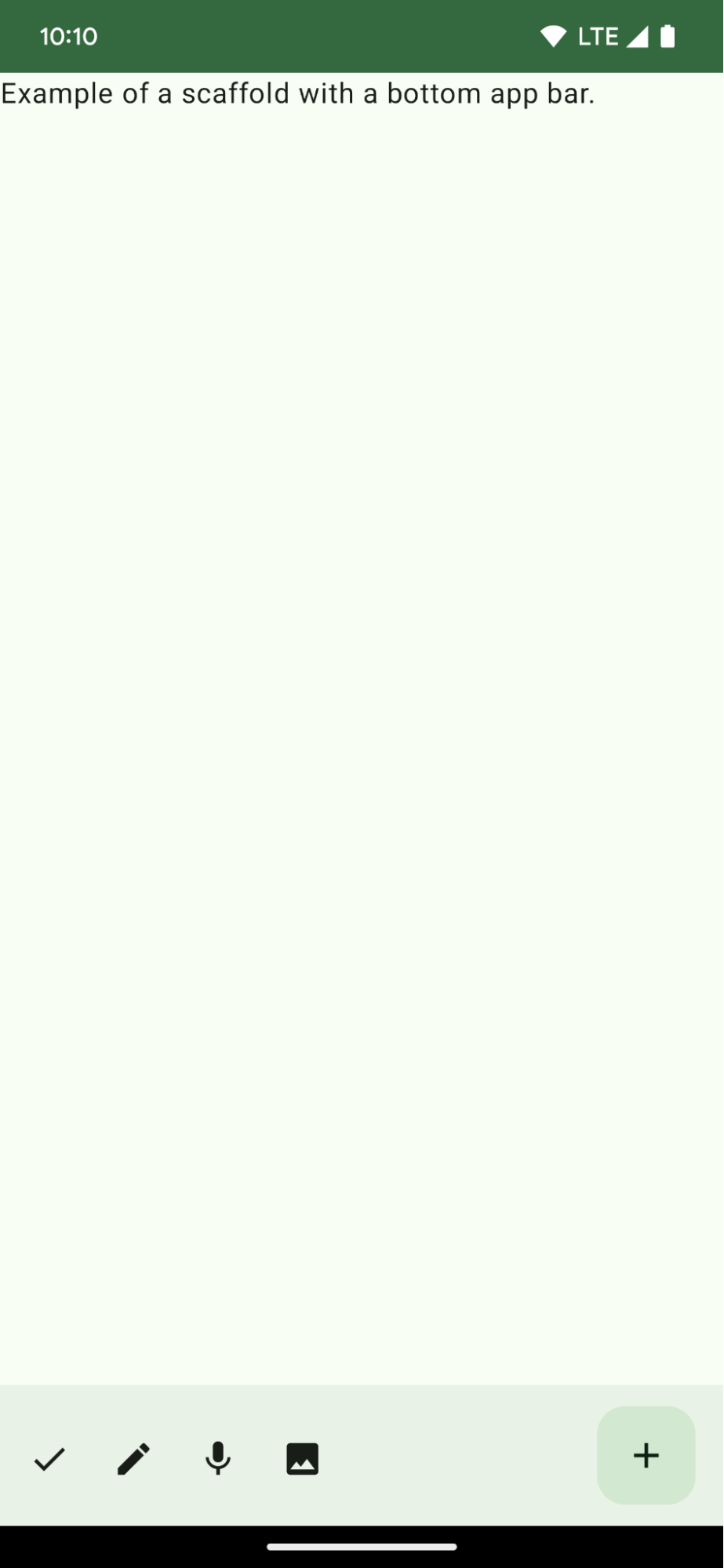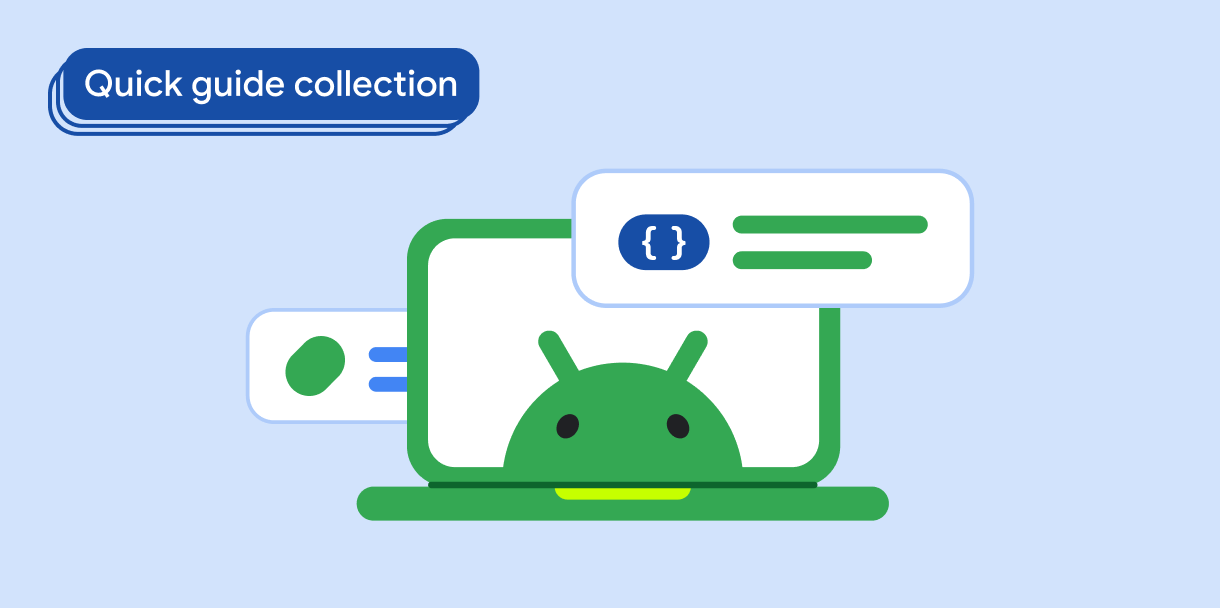أنشئ شريط تطبيق سفلي لمساعدة المستخدمين في التنقّل في وظائف تطبيقك والوصول إليها.
اتّبِع هذه الإرشادات لإضافة شريط تطبيق سفلي إلى تطبيقك باستخدام العنصر القابل للتجميع
BottomAppBar.
توافق الإصدار
يتطلّب هذا التنفيذ ضبط الحد الأدنى من إصدار حزمة SDK لمشروعك على المستوى 21 من واجهة برمجة التطبيقات أو مستوى أعلى.
التبعيات
إنشاء شريط تطبيق سفلي
استخدِم الرمز البرمجي التالي لإنشاء شريط تطبيق سفلي يحتوي على أربعة أزرار رموز، وزر إجراء عائم:
@Composable fun BottomAppBarExample() { Scaffold( bottomBar = { BottomAppBar( actions = { IconButton(onClick = { /* do something */ }) { Icon(Icons.Filled.Check, contentDescription = "Localized description") } IconButton(onClick = { /* do something */ }) { Icon( Icons.Filled.Edit, contentDescription = "Localized description", ) } IconButton(onClick = { /* do something */ }) { Icon( Icons.Filled.Mic, contentDescription = "Localized description", ) } IconButton(onClick = { /* do something */ }) { Icon( Icons.Filled.Image, contentDescription = "Localized description", ) } }, floatingActionButton = { FloatingActionButton( onClick = { /* do something */ }, containerColor = BottomAppBarDefaults.bottomAppBarFabColor, elevation = FloatingActionButtonDefaults.bottomAppBarFabElevation() ) { Icon(Icons.Filled.Add, "Localized description") } } ) }, ) { innerPadding -> Text( modifier = Modifier.padding(innerPadding), text = "Example of a scaffold with a bottom app bar." ) } }
النقاط الرئيسية حول الرمز
Scaffoldخارجي تم ضبطbottomBarله- عملية تنفيذ
bottomBarتحتوي على قائمة إجراءات - الإجراءات التي هي عمليات تنفيذ
IconButtonالتي تحتوي علىIconلنص وصف الصورة والمحتوى، ولكل منها دالةonClickلامدا لتنفيذ هذه الإجراءات
يمكنك تمرير العناصر القابلة للتجميع للمَعلمات الرئيسية التالية:
actions: سلسلة من الرموز التي تظهر على الجانب الأيسر من الشريط وعادةً ما تكون هذه الإجراءات إما إجراءات رئيسية للشاشة المحدّدة أو عناصر تنقّل.floatingActionButton: زر الإجراء العائم الذي يظهر على الجانب الأيمن من الشريط
النتائج

المجموعات التي تتضمّن هذا الدليل
هذا الدليل هو جزء من مجموعات الأدلة السريعة المنظَّمة التي تتناول أهداف تطوير Android الأوسع نطاقًا:

إنشاء إطار عمل للشاشة الرئيسية




